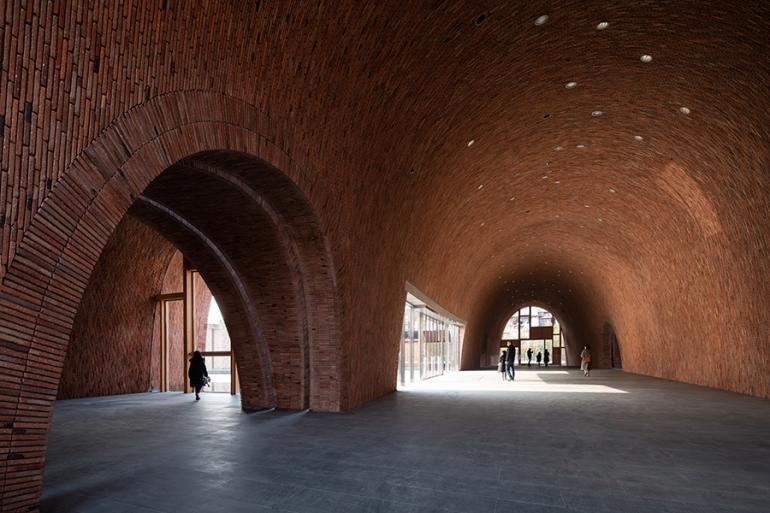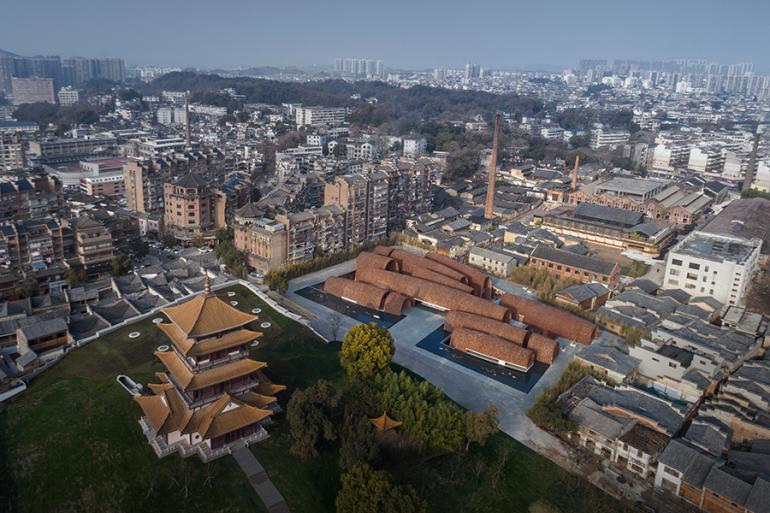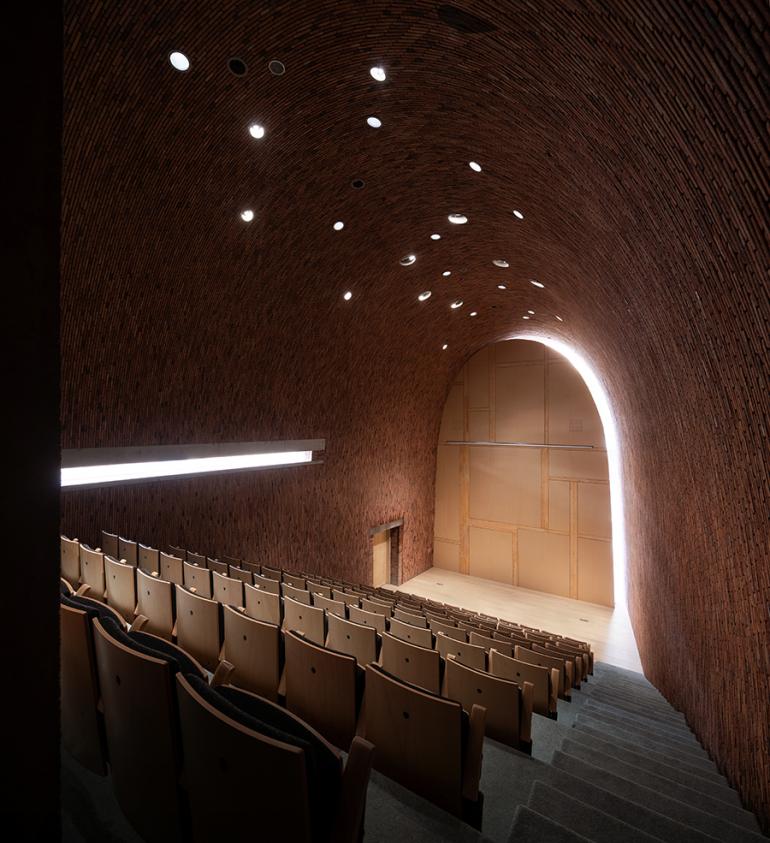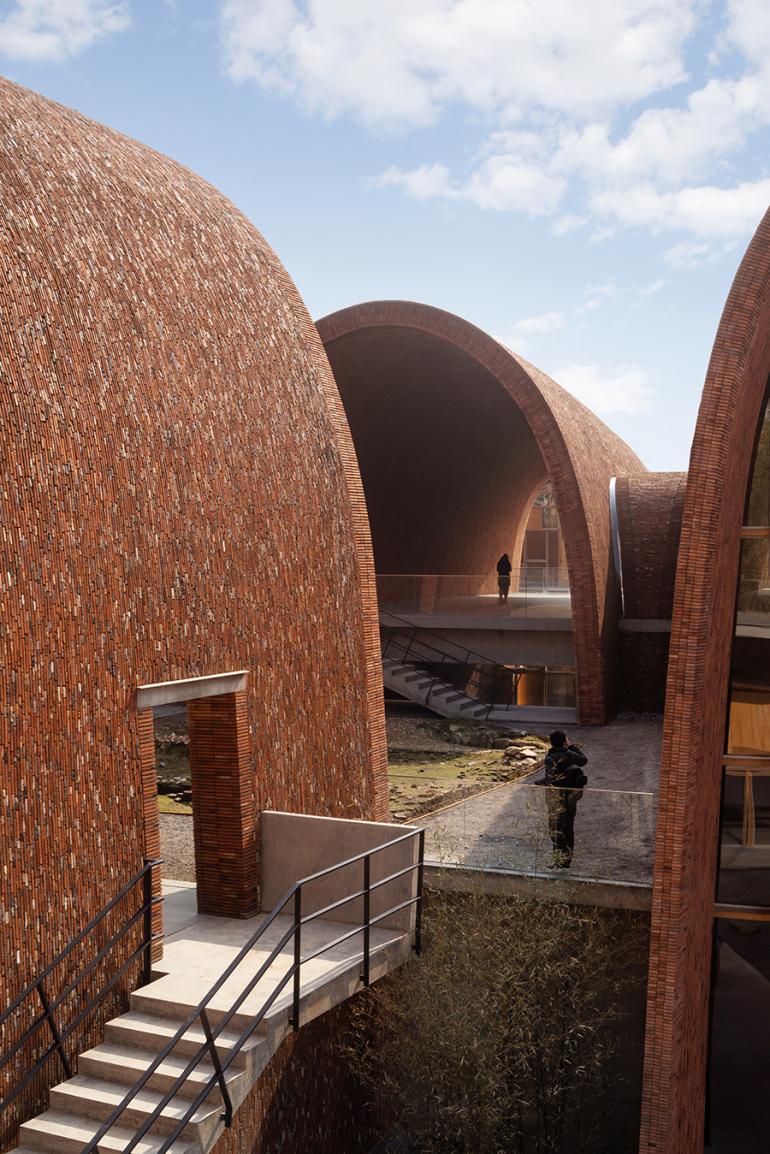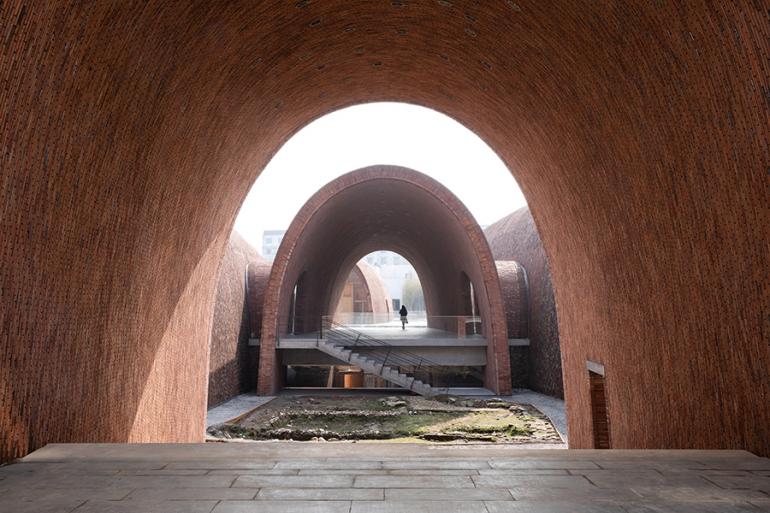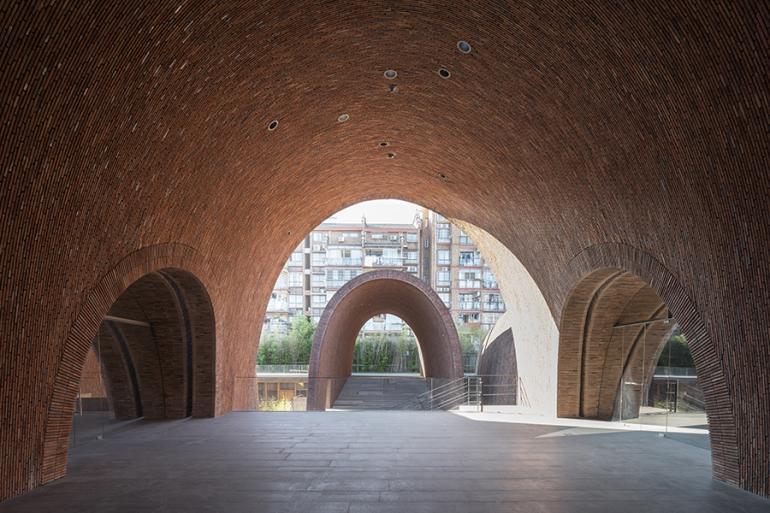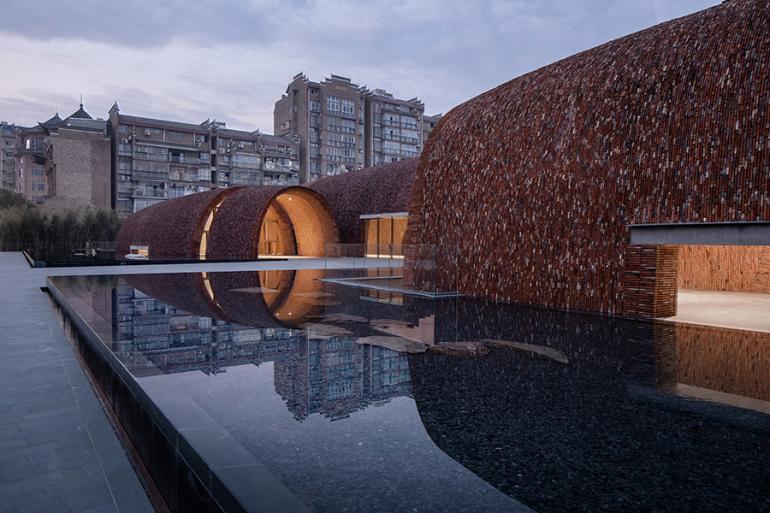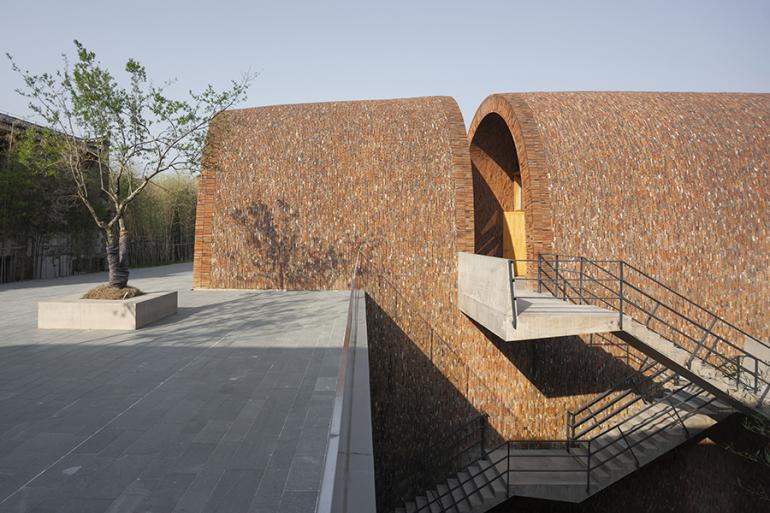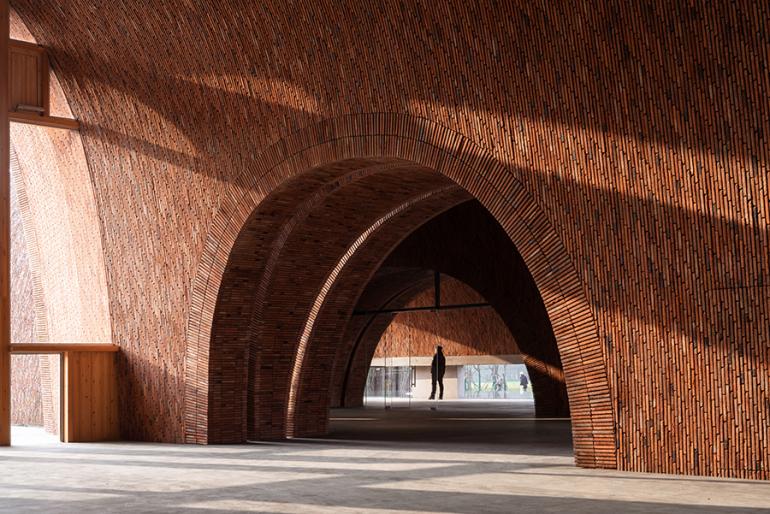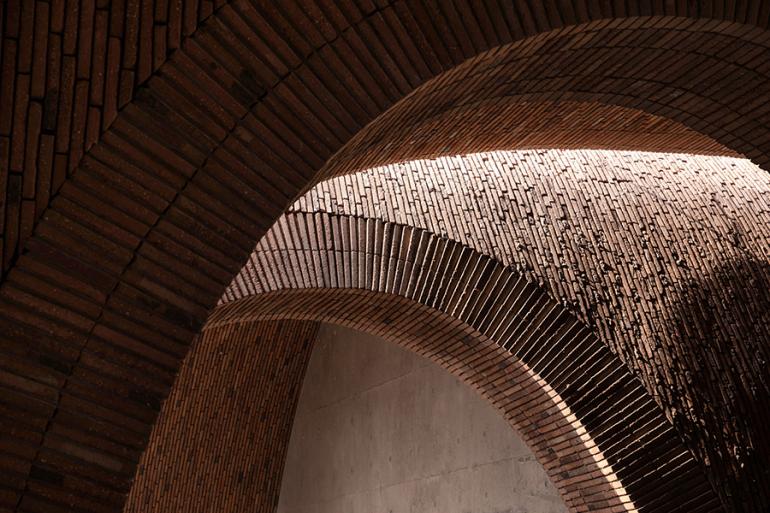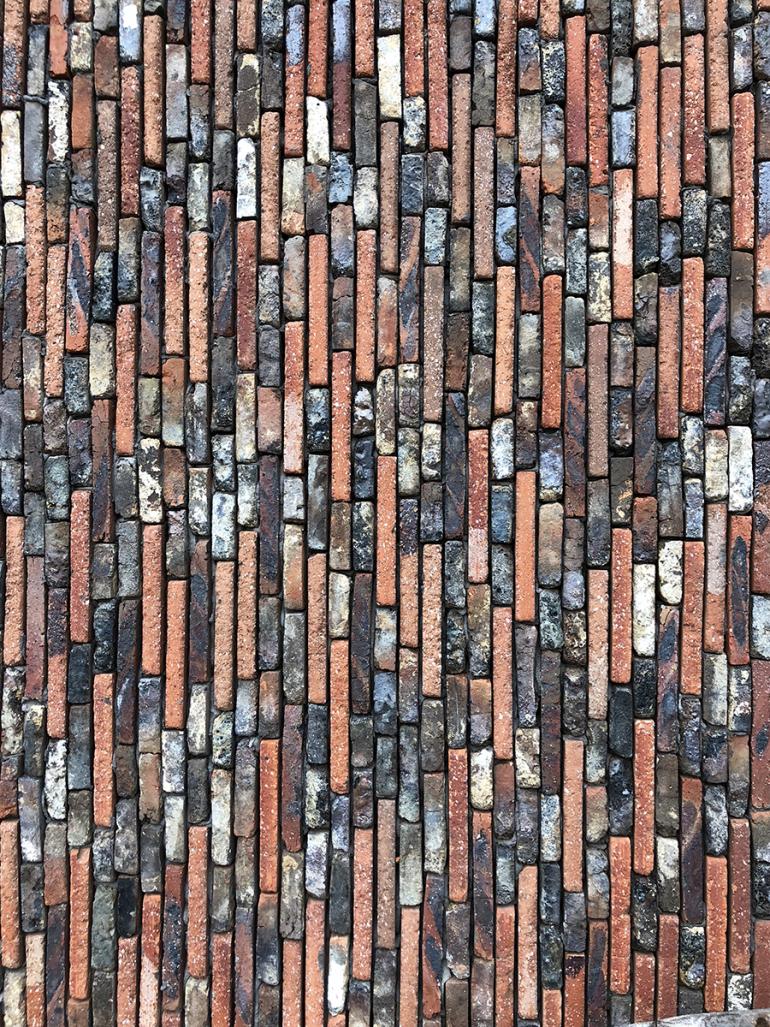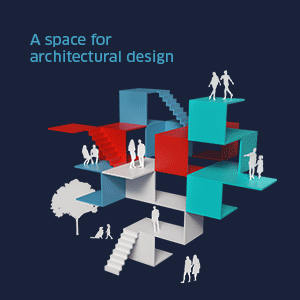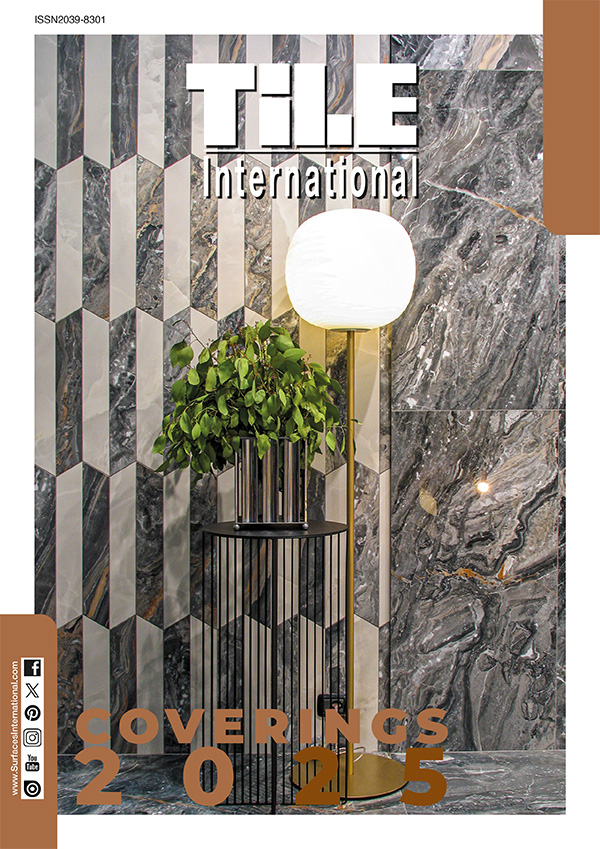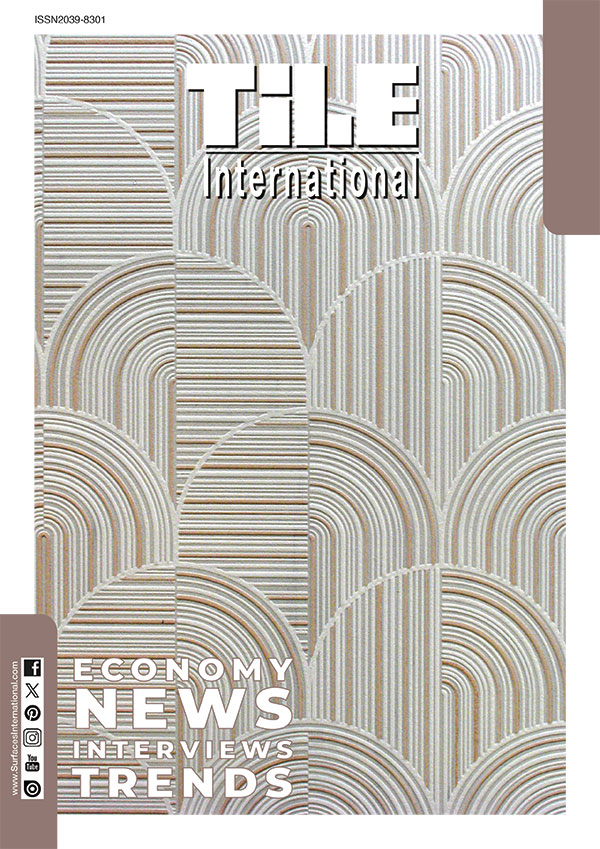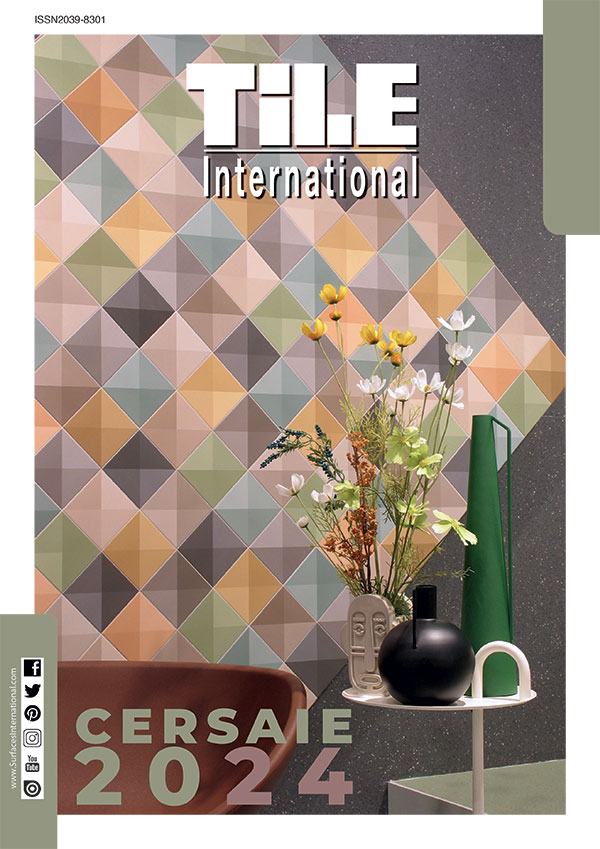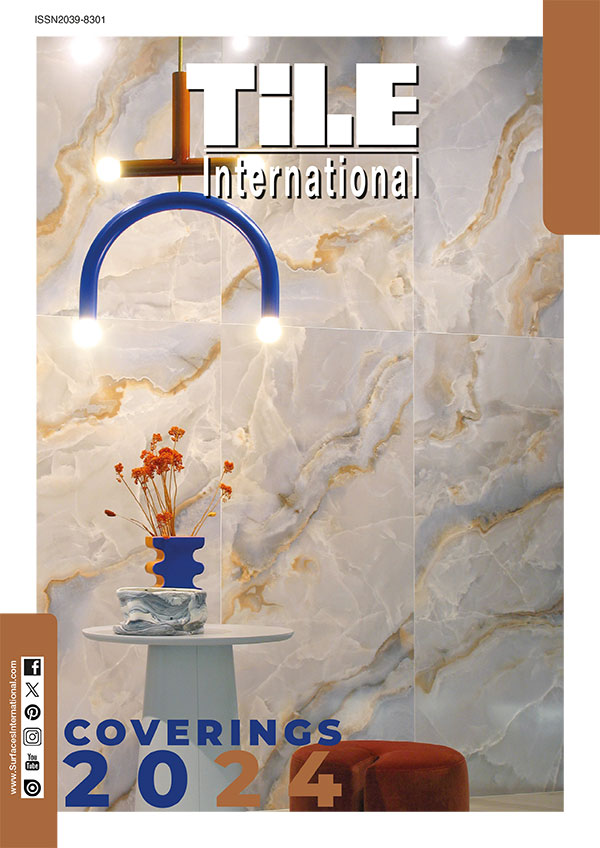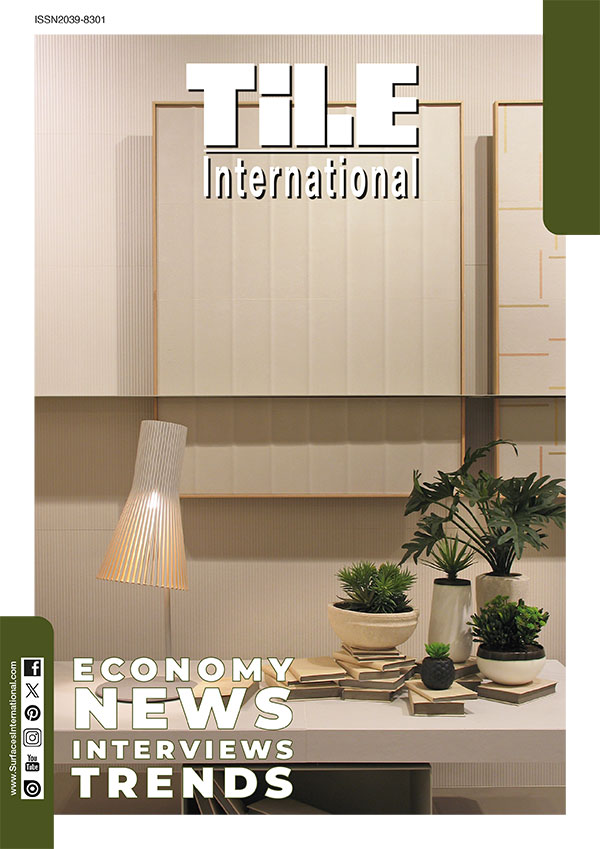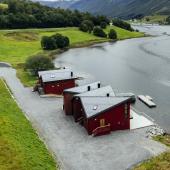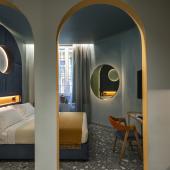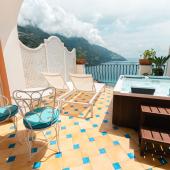The splendid brick vaults of the Imperial Kiln Museum
The Zhu-Pei architecture firm recently completed construction of the Imperial Kiln Museum in Jingdezhen (Jiangxi province), a project that pays tribute to the past and present of a city renowned as the world porcelain capital where porcelain was produced for the Chinese imperial family from the mid-12th century onwards.
Designed to evoke traditional brick kilns, the museum stands on a 10,370 square metre site in the historic centre of Jingdezhen, close to the ruins of the imperial kiln dating back to the Ming dynasty. The building features more than half a dozen brick vaults, modelled on the traditional shape of local kilns, each with different dimensions, curvature and length.
In keeping with local building practice, the bricks used in the construction are partly new and partly recycled from old kilns. The use of recycled bricks to build houses and all kinds of buildings is part of a long tradition in Jingdezhen, given that brick kilns have to be demolished and rebuilt every two or three years to maintain good thermal performance.
Inside the building there are five underground courtyards, each associated with one of the five themes of ancient Chinese culture (gold, wood, water, fire and earth), which allow natural light to penetrate into the interior spaces. The cylindrical skylights in the ceilings of the vaults are reminiscent of smoke holes in old brick kilns and also allow natural light to enter.
The museum also houses artefacts from old kilns discovered during the construction stage, offering visitors an authentic journey of discovery into the origins of the historic city.
*credits
- Location: Jingdezhen, Jiangxi, China
- Project by: Zhu-Pei architecture firm
- Photos: Schran Image and Fangfang Tian, c/o Studio Zhu-Pei
- Completion of work: 2020

